A few years ago, I was in my mid thirties and was ripping the mountain.
I remember that I could ski quick turns in tight trees, jump off (small) cliffs, rip throught moguls…
THIS IS WHAT TELELAMRK IS ALL ABOUT.
But in the last 4-5 years, I’ve considerably slowed down. I don’t get the same feeling, the same ripping feeling.
I’ve done a series about the telemark ski evolution and it made me realized that telemark is a feeling and what ever the era of equipement, it remains FUN
But this latest generation of ALL MOUNTAIN SKIS just doesn’t seem to work for me.
Or did I just get older?
Are alpine skiers just getting better and I can’t keep up anymore?
Is it me or the equipment?
This descent in my confidence to ski all terrain, rip and turn heads started when I tried the Black Diamond Helio 95mm in 2018. I choose a smaller size at 173cm instead of the 178cm I’m usually going for.
I have a friend who had the Helio 105 in a shorter lenght and he liked it a lot, praising the small size to manoeuvre in tight trees.
Well the Helio 95mm in a short size didn’t work. At all.
—
For general information on ski selectrion I have wrote a blog on the subject here.
This blog will only be covering problems for resort oriented all around, all mountain ski in this blog.
Fat skis used for powder do not suffer from those issues.
These are my evolving thoughts as of March 2022.
This is the story of my quest to find the best All Mountain Telemark ski.
Note: I have a prodeal with Black Diamond Equipment like most industry professional. I can have prodeals with most ski manufacturers but I’ve been skiing BD for 14 years because they serve me well. I still pay for most of my skis.
This is my story, my skis, the thoughts shared here are mine and reflects my experience:
Skier: Rene-Martin
Year telemark skiing: 26
Weight: 200 pounds
Height: 6.1 ft
Days on snow: 100 days a year (around 60 resort skiing, 40 backcountry)
My Experience with ski brands and testing.
First, I’ve been telemark skiing for a 25+ years.
I’ve tried hundreds of skis over the years.
Some years, around 2004-2006,when telemark was at it’s peak of popularity, I would even go at test events to review telemark skis for specialized magasine.
Nowadays, telemark demos are hard to find.
But I work as a ski patroller at Le Massif where about 20 of us are on telemark.
So even in recent years, I’ve tried a lot of different setup.
Atomic, Volk, Rossignol, Nordica, Blizzard, Salomon, Moment, Dynastar, Armada, Xalibu at almost all Black Diamond skis in the last 14 years…
Even with all this testing, I don’t consider myself a great tester. It takes me some time to identify what works in a ski or a binding.
With years, I’ve become better and better at identifying what works and what doesn’t.
THE QUEST
I’ve been looking for a ski that works for telemark in the 85-95mm range. That’s the width of the ski under foot.
Most skis under 90mm are just too stiff and mainly aimed at carving. The industry calls them all mountain skis or front side skis, but really it’s meant to ski 75% on groomers and occasional powder, chopped powder. No moguls, no eastern tree skiing where there’s always bumps, powder or chopper powder
Most 90 to 95mm skis are oriented for light touring. Those skis like the BD Helio 95mm not only have gone stiffer and stiffer but this combined with the lightess makes the skis very unstable for the variaty of snow a resort have. It’s just not damp enought.
There are skis that works but in general, for me at least, I have not found a perfect all mountain telemark skis for a LONG time.
And it made me think, what is the greatest all around telemark ski I’ve ever tried?


In 2021-2022, I have:
- a slalom ski at 65mm (165cm long) mounted on NTN freeride
- a GS ski at 63mm, 170cm on freeride
- a BD Impulse 98mm, 180cm on a Meidjo 3 with alpine heelset
- A BD Helio at 115mm, 186cm on a meidjo 3 with alpine heelset (I use it only to guide in BC)
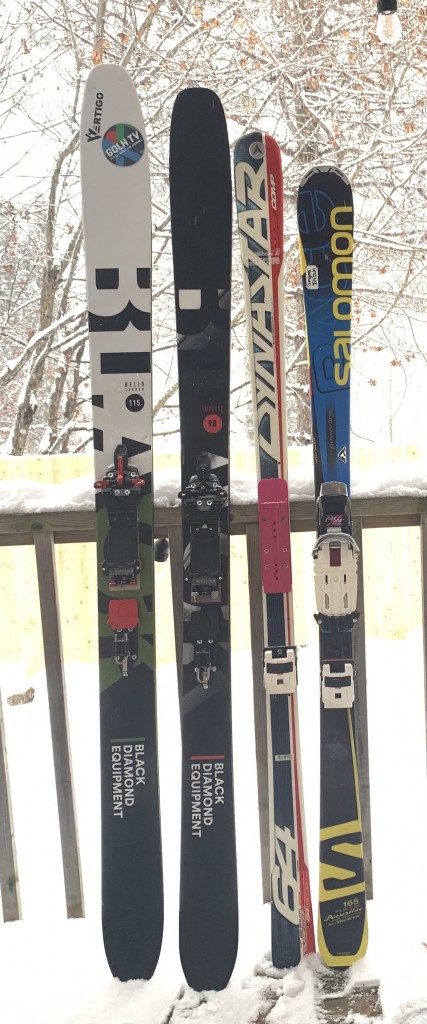
Here are the PROBLEMS with modern MID FAT skis
1. Shallow Rise Tip
Problem: the spatulla doesn’t rise enough. Note: Fat skis used for powder do not suffer from this issue.
In 2018, I thought that the small size combined with the tip rocker of the Helio 95 was the problem.
The tip rocker problem was easily identified. The tip only lifted a few cm of the ground and the telemark squat would frequently make the tip dive in a bump.
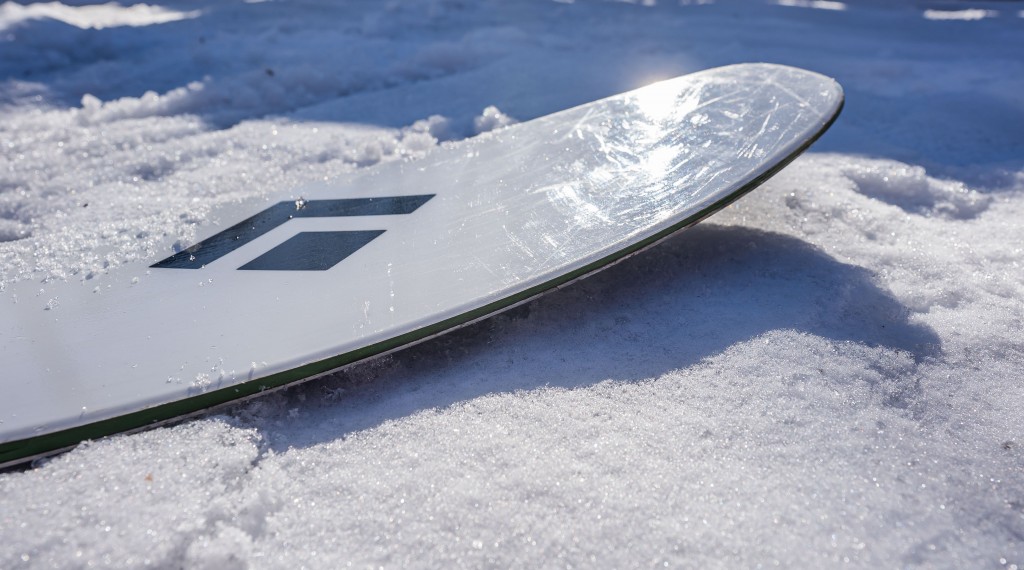
I could make it work but I needed to keep my telemark lead change VERY small. Like less than a boot long. And I needed to be very active to get the skis to manoeuvre around moguls. It was a nightmare.
So I sold the ski to a smaller skier and thought that was that. Well over the years, I’ve realized that there is actually 4 shape changes that have impered our ability to telemark on modern all-mountain shape.
My Quest was only starting.
2. Stiffer Tip
Problem: stiff tip combined with a shallow rised tip makes the tip catch in bumps. Note: Fat skis used for powder do not suffer from this issue.
The next year, I went for a narrower ski, the Black Diamond Route 88. I picked them the right lenght at 178cm.
I moved away from carbon as I realized that it was too light for resort skiing and also that it was just too stiff.
This solved the tip diving problem, ouf!
But even if the ski was ok in moguls, ok on groomers, ok in powder, I still wasn’t ripping like before. For the story, the last ski that BD made that worked for my was the Aspect that was produce in 2014-15. After that the Link, the Helio, the Route all had the same problem.
Stiffer and stiffer tip mixed with a shallow rise tip really kills the energy tranfered to the back ski in a telemark turn.
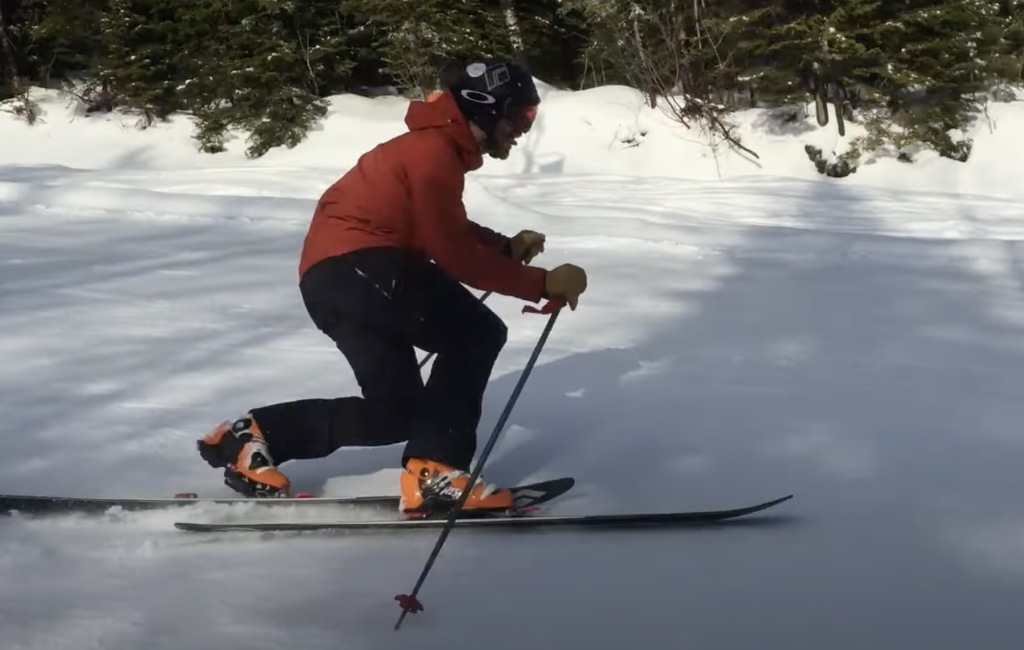
See how low the tip is barely off the ground.
You have to think of the back ski as a second point of balance. When turning, we are puitting our skis on edge. On the front ski, our weight is distributed on the whole edge of the ski. It’s centered.
On the back ski, using any modern active binding, our energy is more transfered half way between the center and the tip. We can even see my back ski lifted of the snow in this image.

Now if the spatula doesn’t rise a lot or if it’s too stiff, it will catch a lot more into things.
But there is more!
3. Rockered Tip
Problem: the ski has no energy to give back to the skier. Note: Fat skis used for powder do not suffer from this issue.
Again, telemark skiing, we transfer half way between the center and the tip of the back ski by the boot-binding combo. If it’s too rockered, the energy is lost in the ski shape. Tradional shaped skis have camber to give energy to the ski. When pushed, it wants to come back into it’s original shape. With a tapered tip, we are pushing the ski into it’s designed shape, just making it rounder, and the ski is not going to give any energy back.
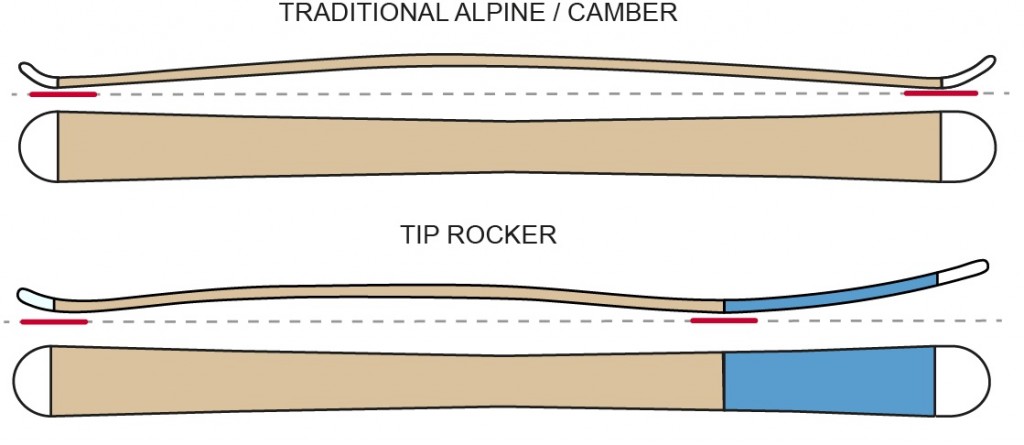
4. Tapered Tip
Problem, the shape of the tip changes the radius of the turn on the back ski. Note: Fat skis used for powder do not suffer from those issues.
The final factor is the tapered tip. This is when the max wigth of the ski is not at the top of the spatula. On hard pack snow, this changes the way the arch of the edge conduct the ski. It’s like if your back ski had a big belly.
Basically, they move the widest part of the ski toward the center. This has many advantages. It reduces mass at the tip, thus reducing swing weight, it creates a shorter turn radius without a super large tip that becomes bulky and clumky. But for our back ski while telemarking, it reduces grip and edge control. A bit of tapered tip is not a problem, but laterly, ski company have increased it on some models to become a problem.
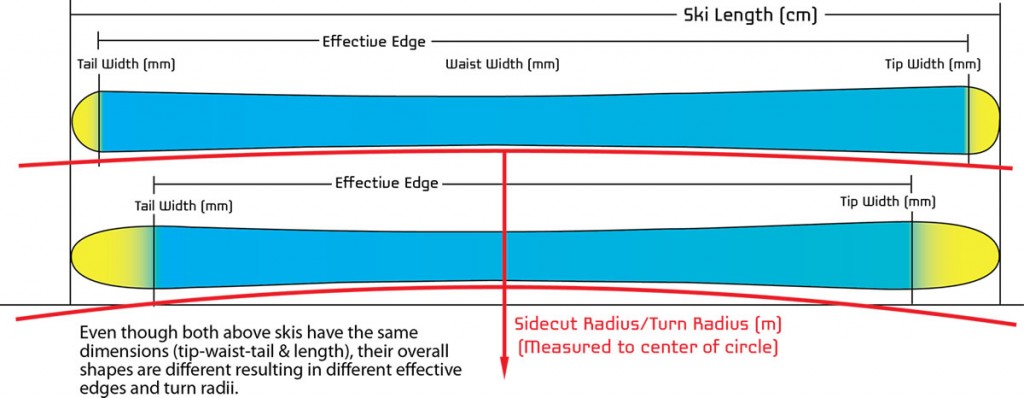
And these 4 problems are not exclusive to Black Diamond. In the last 5 years, almost all brands are going in this direction
There is worst.
This is not working for telemark inbound as an all around ski. If you are like me and ski moguls, tress, powder, groomers, ice, this shallow tip rise and stiff tip is just deadly, rocker and tapered tip definetly doesn’t help. I found that this is NOT a problem for fat skis aimed at powder.
But why are the manufacturers going for those kind of shapes then?
You have to understand it works of the alpine turn. It works really good.
It took me a while to understand that.
THE SKI I WAS WANTING FOR

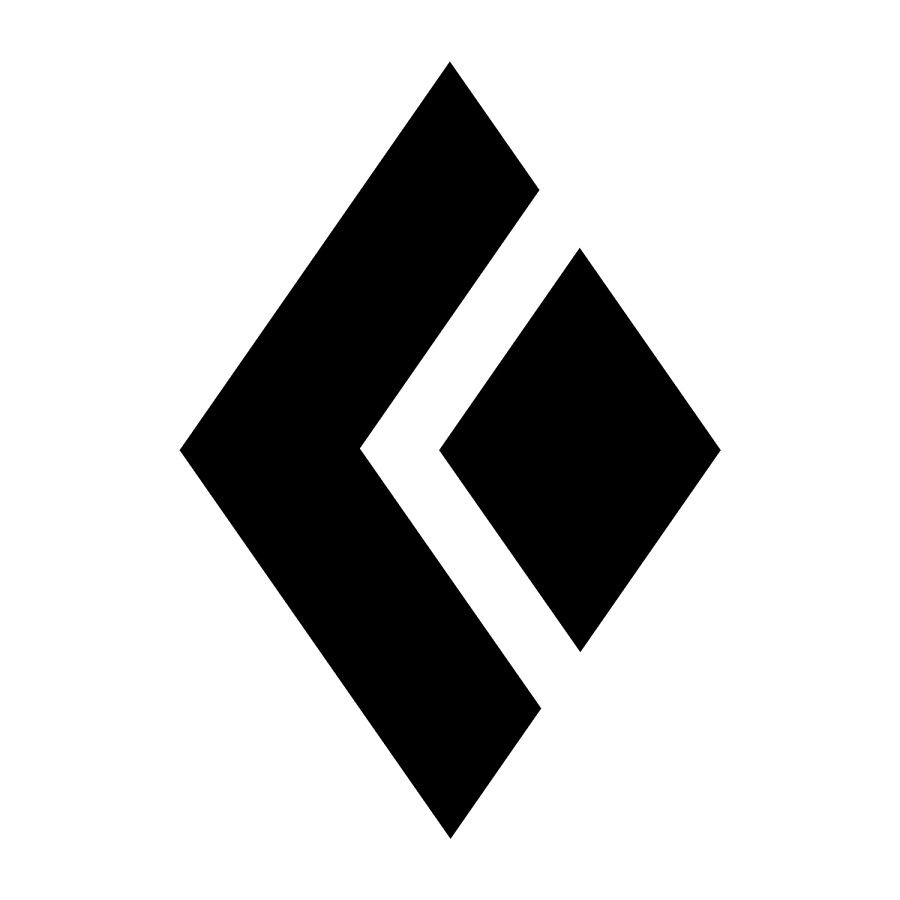

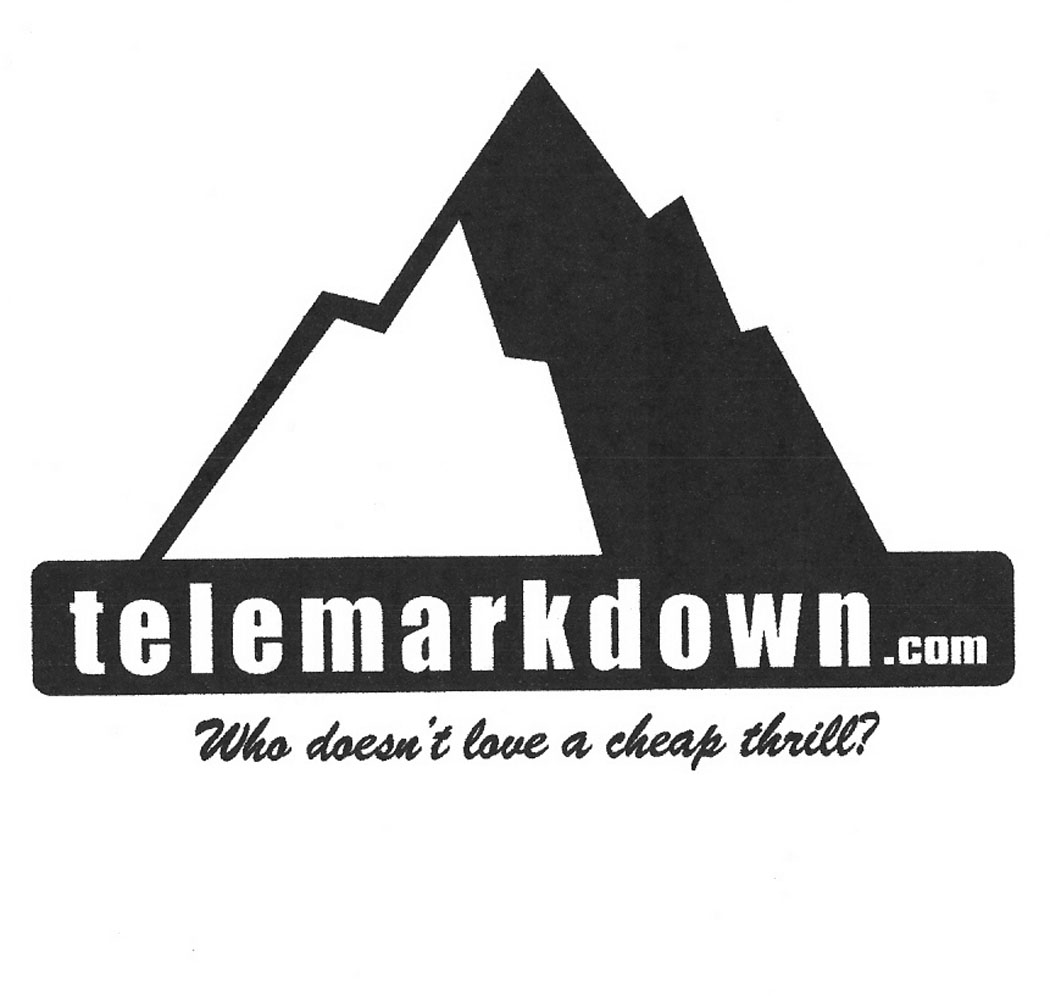

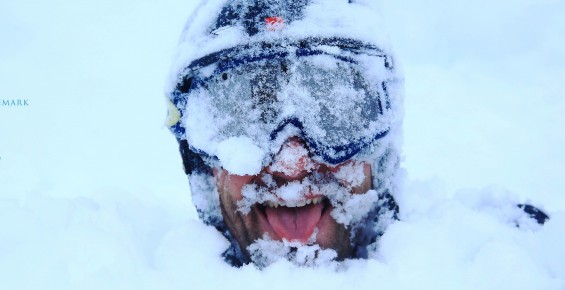
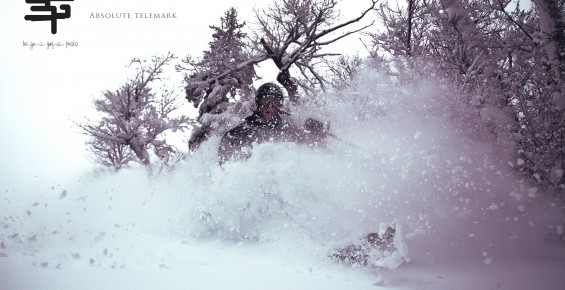

What others think about it